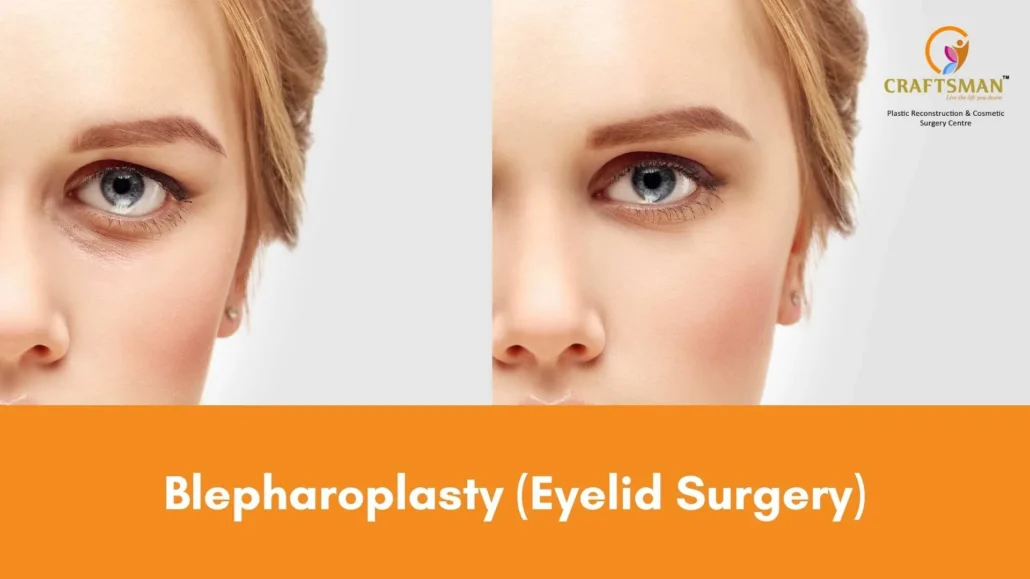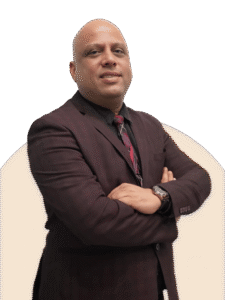Is Blepharoplasty Eyelid Surgery Safe and Effective?

You know that moment when you glance in a mirror and you say, I look tired… but I am not even tired, why?
It’s not you, it’s all of us. Our skin underneath our eyes starts to sag, the eyelids start to droop, and the bags creep in. It can be age, it can be genetics. Either way, it makes us look older or more fatigued than we are.
That’s where blepharoplasty, or alternatively referred to as eyelid surgery, comes in. It’s one of those surgeries that subtly alters your face without altering who you are. And yes, the one everybody wants to know is blepharoplasty eyelid surgery safe and effective? The answer’s a resounding yes when performed by the correct & expert hands.
Now let’s discuss how it’s done, what happens, and why it’s one of the most highly touted means to restore your eyes and your confidence.
Table of Contents
What Is Blepharoplasty?
Basically, blepharoplasty is a form of cosmetic surgery that contours or revives your eyelids. This can be carried out on the upper lids, lower lids, or both, tailored to what’s ideal and required for you.
If you’ve got extra skin folding over your upper eyelids, that’s where upper blepharoplasty helps. It trims away that loose skin so your eyes open up again.
If your concern is puffiness or bags under the eyes, lower blepharoplasty smooths that out by removing or repositioning fat and tightening the area.
The goal isn’t to change your face. It’s to make your eyes look like you again, just more awake, less tired, and naturally fresh. And when it’s done by a qualified plastic surgeon, blepharoplasty is widely considered a safe and effective way to brighten your whole appearance.
Why People Consider Blepharoplasty
People choose blepharoplasty for all sorts of reasons, but this is the most common:
“I just want to look less tired.”
Maybe there’s a little hooding over your eyes, or puffy bags that no concealer can hide. It’s just sometimes a matter of feeling and looking the way you’re awake, alive, and happy.
Typical causes are:
- Droopy or hooded upper eyelids
- Bulging lower lids or eye bags
- Excess skin or folds which cause the eyes to appear smaller
- Fat deposits that create puffiness
- Or even blocked vision caused by sagging skin
What’s nice is that the benefits go beyond the mirror. For some, it improves vision. For some, it’s regaining a level of confidence. Either way, it’s one of those not-so-obvious but really strong changes that brings your eyes the energy to look more radiant and feel like you again.
How Blepharoplasty Surgery Works
It’s a straightforward, routine outpatient procedure — you go home the same day.
It can be done under local anaesthetic (you’re awake but comfortable) or general anaesthetic (you’re completely asleep), depending on what’s needed.
Upper Eyelid Surgery
- A tiny incision is made in the natural fold of your eyelid.
- The surgeon removes any extra skin and may reposition or remove fat.
- The incision is then closed with fine sutures — once healed, the line is nearly invisible.
Lower Eyelid Surgery
- The cut is made either just under the lashes or inside the lid, so it’s barely noticeable.
- Fat deposits are smoothed or repositioned to reduce puffiness and create a more contoured look beneath the eyes.
Combined Procedure
Both upper and lower blepharoplasty can be done together — a common choice for full eye-area rejuvenation.
Additional Enhancements
Some people combine this with a brow lift or skin resurfacing for a fresher overall result.
Duration & Recovery
The surgery typically takes one to two hours.
You’ll usually head home the same day — perhaps with a bit of swelling, but mostly relieved that it’s finally done after all that planning.
Is Blepharoplasty Safe?
The truth is that, for the most part, blepharoplasty is a very safe and comfortable procedure, especially when you are in the care of an experienced board-certified plastic surgeon. It’s among the most popular cosmetic surgeries worldwide, and most patients recover without incident.
It’s done with sterile, delicate techniques designed to protect your eyes and skin. Recovery can be faster and more comfortable for most people than they realise.
Sure, all surgery has some it’s associated risk, but the risks with blepharoplasty are minimal.
But by following aftercare and keeping it clean, you should heal up nicely.
So yes, provided it’s performed properly and with the proper care, blepharoplasty is also safe and very effective.
Possible Risks and Complications
Face it: No procedure is without risk. There are a few temporary side effects that come with even the safest surgeries.
After blepharoplasty, you might notice:
- Considerable puffy and bruising for the first couple of days
- Dry or watery eyes
- A sense of fullness or little discomfort
- Minor scars that are usually concealed in the skin’s own folds
Serious complications, such as infection or lasting drooping, are very uncommon. Lower eyelid drooping can occur, but it is rare and especially so when your surgeon is talented and cautious.
The good news is that most of these issues are relatively brief. Swelling peaks at around day 2 or 3, but resolves rapidly.
And as always, the safest results come from setting aside plenty of time to screen potential surgeons and follow every bit of recovery advice you’re given.
Tips for Safe and Effective Results
If you only take one thing away from this, pick your surgeon very meticulously, because that is where the true safety resides.
Here’s what will maximise that experience and outcome:
- Choose a certified specialist. Find the members of recognised bodies.
- Ask questions. ‘Don’t shy away, this is your face.
- Keep your expectations real. You’re not supposed to look different; you’re supposed to look rested and freshened.
- Follow recovery instructions. All the little tips count, from how you wash your eyes to when you can wear makeup again.
Blepharoplasty isn’t a one-size-fits-all procedure. Your eyelid fold, your skin type, even your lifestyle, everything factors into what you end up with. It’s for this reason that a brief consultation matters greatly. It ensures your surgery is customised to perfectly fit you.
When to Consider Alternative or Additional Procedures
Other times, though, it’s not only about the eyelids. What appears to be sagging lids could actually be from your forehead or brow. Then your surgeon may suggest a brow lift instead, or in addition to, blepharoplasty for a smoother, elevated appearance.
There is also ptosis surgery that addresses sagging eyelids due to weak muscles instead of excess skin.
And if you’re after a complete refresh, your surgeon might suggest combining blepharoplasty with treatments like laser resurfacing, fillers, or chemical peels to smooth fine lines and brighten your overall complexion.
Each face has its own tale to tell, so your course of treatment should be as individual as you are. The right mix, selected wisely, can provide natural, long-lasting rejuvenation.
Conclusion
So then, to that all-important question: Is blepharoplasty eyelid surgery a safe and effective procedure?
Yes. Done by the right professional, in the right environment, it’s one of the safest and most satisfying cosmetic surgeries you can opt for.
It’s not becoming something other than what you are. It’s about learning to let your eyes do the talking again. The lift is slight, the effect profound. You could hear, You look fabulous – did you get a good night’s sleep? You didn’t guess; you had surgery.
Take your time. Research. Talk openly with your surgeon. The best results are achieved as a result of knowledge and realistic expectations.
Ultimately, blepharoplasty isn’t just a cosmetic repair. It’s an investment in feeling like yourself again, you and confident and bright-eyed and refreshed.
FAQs
Who is a good candidate for blepharoplasty?
Healthy adults with upper-lid hooding, under-eye bags, or lax skin; stable health and realistic goals; no uncontrolled dry eye or active eye disease.
How effective is eyelid surgery for droopy lids and under-eye bags?
Very effective for removing extra skin/fat and tightening tissue; may be paired with brow lift, ptosis repair, lasers, or fillers for complete rejuvenation.
Upper vs. lower blepharoplasty—what’s the difference?
Upper: removes hooding, refines crease (incision in natural fold).
Lower: treats bags/laxity via internal (no external scar) or external approach when skin tightening is needed.
Will eyelid surgery improve my vision?
Yes—when overhanging skin limits the visual field; surgeons confirm with visual-field tests and photos (often needed for insurance).
How long do results last?
Upper lids: ~5–10+ years.
Lower lids: contour changes are typically long-lasting; normal aging continues.
How long is recovery and downtime?
Light work in 5–7 days; most bruising/swelling fade by 2–3 weeks; makeup ~10–14 days (if cleared); full refinement 6–12 weeks.
View More Services


